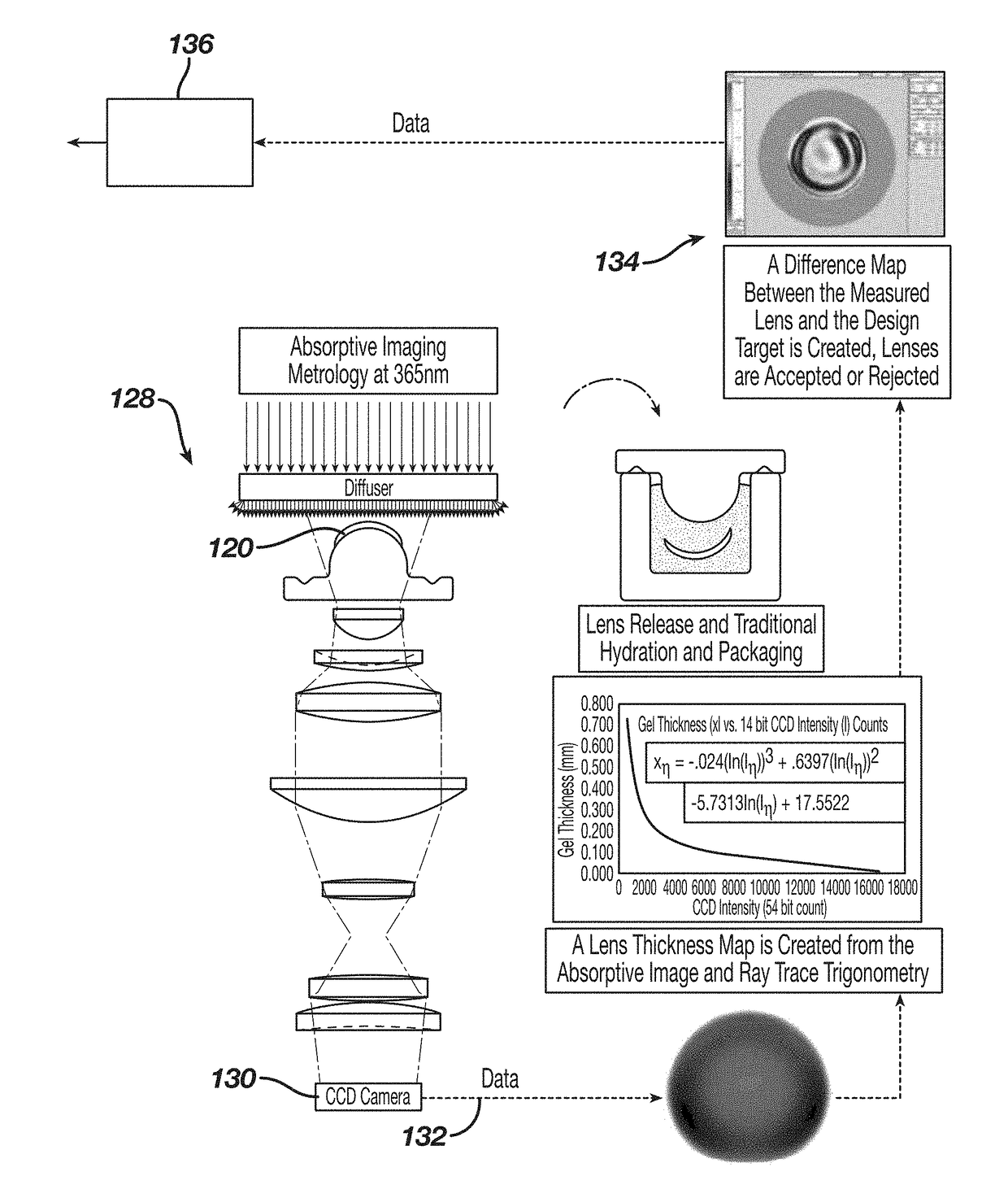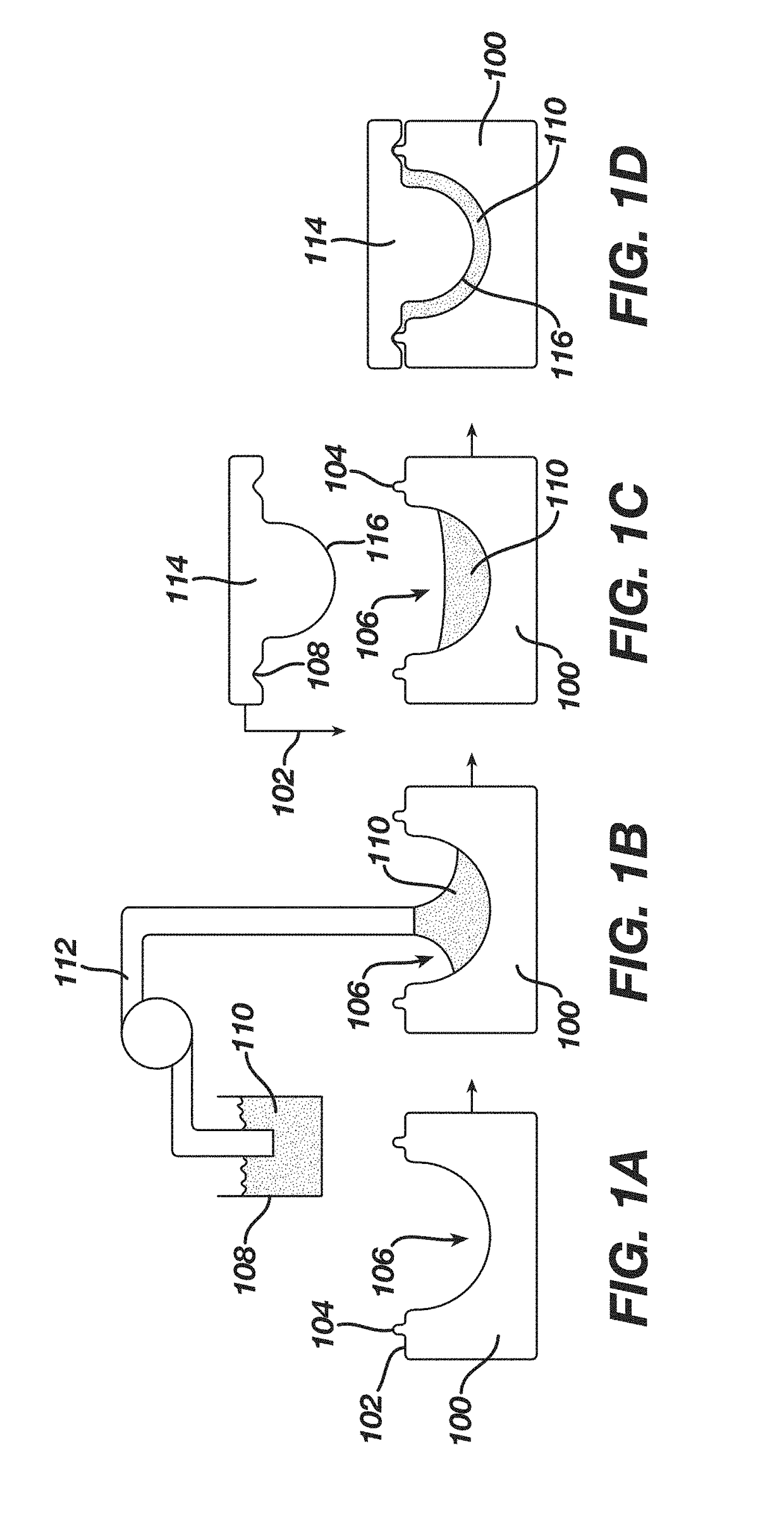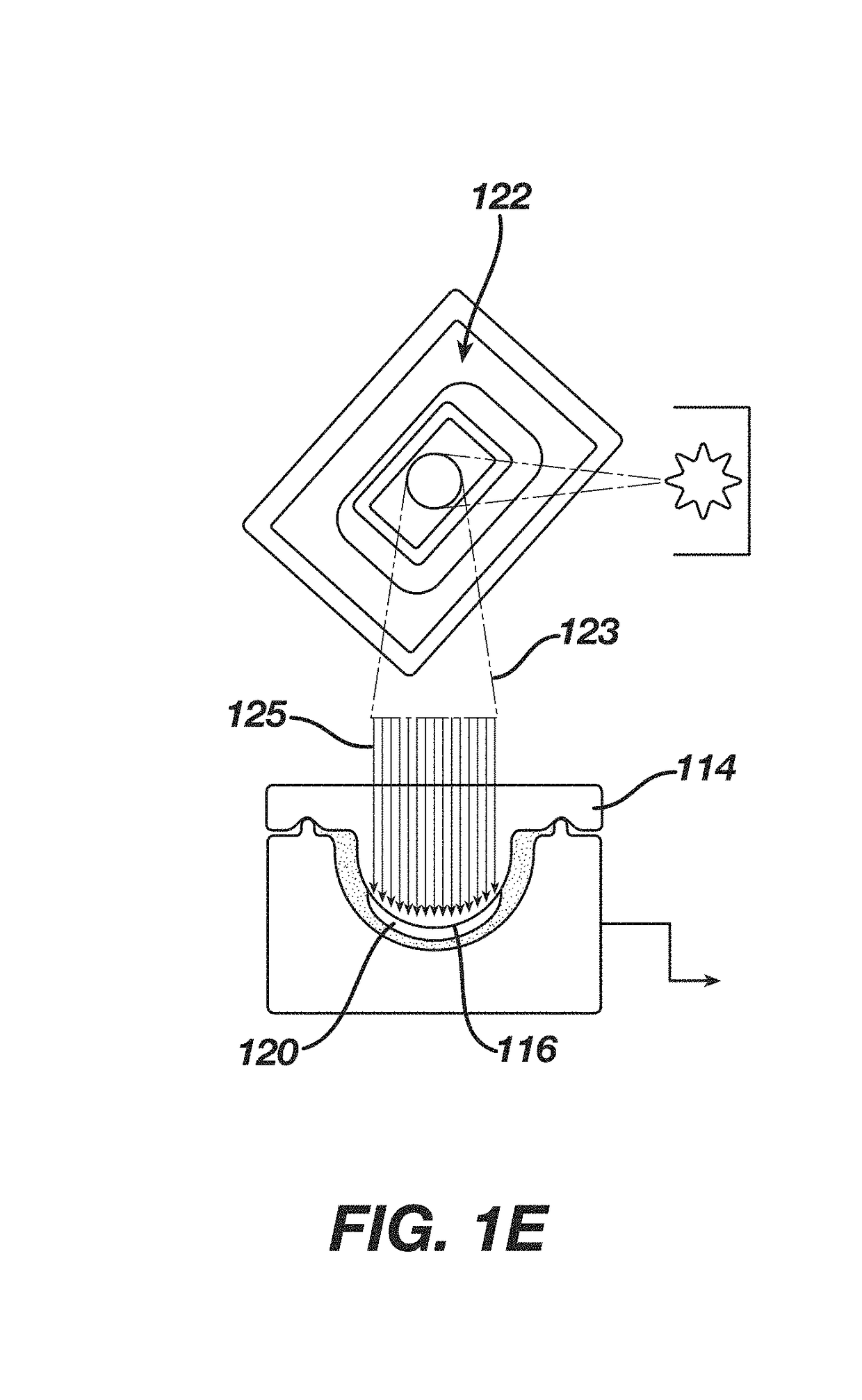Systems and methods of using absorptive imaging metrology to measure the thickness of ophthalmic lenses
- Summary
- Abstract
- Description
- Claims
- Application Information
AI Technical Summary
Benefits of technology
Problems solved by technology
Method used
Image
Examples
Embodiment Construction
[0119]In the specification, various terms may be used for which the following definitions apply:
[0120]“Actinic Radiation” as used herein, refers to radiation that is capable of initiating a chemical reaction.
[0121]“Arcuate” as used herein, refers to a curve or bend like a bow.
[0122]“Beer's Law” as referred to herein and sometimes referred to as “Beers-Lambert Law” is: I(x) / I0=exp (-αcx), wherein I(x) is the intensity as a function of distance x from the irradiated surface, l0 is the incident intensity at the surface, α is the absorption coefficient of the absorbing component, and c is the concentration of the absorbing component.
[0123]“Collimate” as used herein means to limit the cone angle of radiation, such as light that proceeds as output from an apparatus receiving radiation as an input; in some embodiments the cone angle may be limited such that proceeding light rays are parallel. Accordingly, a “collimator” includes a apparatus that performs this function and “collimated” desc...
PUM
 Login to View More
Login to View More Abstract
Description
Claims
Application Information
 Login to View More
Login to View More - R&D
- Intellectual Property
- Life Sciences
- Materials
- Tech Scout
- Unparalleled Data Quality
- Higher Quality Content
- 60% Fewer Hallucinations
Browse by: Latest US Patents, China's latest patents, Technical Efficacy Thesaurus, Application Domain, Technology Topic, Popular Technical Reports.
© 2025 PatSnap. All rights reserved.Legal|Privacy policy|Modern Slavery Act Transparency Statement|Sitemap|About US| Contact US: help@patsnap.com



